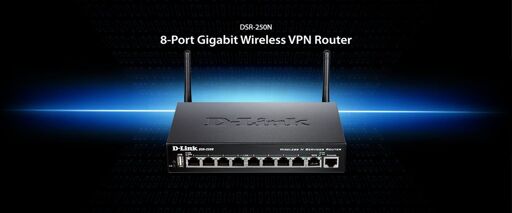I mean, some of those EOLed nearly a decade ago.
You can argue over what a reasonable EOL is, but all hardware is going to EOL at some point, and at that point, it isn’t going to keep getting updates.
Throw enough money at a vendor, and I’m sure that you can get extended support contracts that will keep it going for however long people are willing to keep chucking money at a vendor – some businesses pay for support on truly ancient hardware – but this is a consumer broadband router. It’s unlikely to make a lot of sense to do so on this – the hardware isn’t worth much, nor is it going to be terribly expensive to replace, and especially if you’re using the wireless functionality, you probably want support for newer WiFi standards anyway that updated hardware will bring.
I do think that there’s maybe a good argument that EOLing hardware should be handled in a better way. Like, maybe hardware should ship with an EOL sticker, so that someone can glance at hardware and see if it’s “expired”. Or maybe network hardware should have some sort of way of reporting EOL in response to a network query, so that someone can audit a network for EOLed hardware.
But EOLing hardware is gonna happen.
all hardware is going to EOL at some point, and at that point, it isn’t going to keep getting updates
EOLing hardware should be handled in a better way
Both of these are solved by one thing: open platforms. If I can flash OpenWRT on to an older router then it becomes useful again.
Bingo.
Either support the device until the heat death of the universe, or provide consumers with the access to maintain it themselves.
But neither of those help corporations make them all the money. So we need regulation to force them to.
Regulation? I think you mean “guillotines”…
Regulation guillotines maybe?
my guillotine is named regulation
Definitely don’t this in the past (Linksys WRT54G!) but let’s be honest, the kind of people running 10yo Dlink routers aren’t going to flash new firmware, let alone OpenWRT or even know to look for it. It would have to come that way from the factory. And even then I doubt most people even do regular updates, sadly.
Counter point: so it should automatically update every night when updates are available, and should have or migrate to an open standard at mfg EoL or from the factory.
It’s still the mfg fault, full stop.
If I can flash OpenWRT on to an older router then it becomes useful again.
well, only if it has more than 4 MB storage, 8 MB RAM. I’m practically swimming in older routers that can’t even pass that requirement, and even today the cheaper, that is, more affordable options are still near that for some fucking reason.
This is the correct reaction to old home equipment.
Right?
Something this old is going to be power inefficient compared to newer stuff, and simply not perform as well.
I would know, I just booted up a 10 year old consumer router last night, because the current one died. It’ll be OK for a few days until I can get a replacement. Boy, is this thing slow.
My cat likes how much heat they make too.
I have a netgear router that isn’t even that old and it doesn’t have gigabit ports.
even though I was able to throw openwrt on there to mess around with it’s still e-waste
e-waste? a lot of networks dont need anywhere near gigabit. Especially because at a lot of places around the world even the ISP can’t provide that bandwidth for internet, but this applies to internal networks too. in a lot of cases a 100 mbps capable managed switch (which a router can be, even if with limitations) is enough
I think there should be a handoff procedure, or whatever you want to call it.
As EOL approaches, work with whatever open router OS maker is available (currently OpenWRT) to make sure it’s supported, and configs migrate over nicely. Then drop one last update, designed to do a full OS replacement.
Boom, handoff complete.
I’d support a regulation that defines either an expiration date or commitment to open source at the time the hardware is sold.
When the users are in control of the software running on their devices then “EOL” is dependent the user community’s willingness to work on it themselves.
EoL of anything should mean open source code. You don’t want to open source your code? Then you must keep servicing your products and must keep your servers up
EU is cooking something with EU Directive on Liability for Defective Products. I’ve read only part of it, but basically companies are liable for bugs in software unless they opensource it.
I can still use a 2003 AMD Opteron with the newest builds of Linux. It’s an open standard. As long as the hardware still physically works. The only reason these pieces of hardware are EOL is because they chose to lock them down.
The ones with EOL 2015, fair play. But May 2024 isn’t all that long ago.
Edit: Looks like those were launched in early 2015. I guess requesting users to update devices after 8+ years might not be too far fetched.
When we’re they last sold though, eol 8 years after last up for sale is fine, but if they were still on sale up to last month that is a different issue.
I agree. Buy a new router that isn’t Dlink.
Yeah after gettin screwed by the DLink you might as well use the TP-Link
The DSR-150 is still being sold on Amazon under the D-Link store. Why the hell would you end of life something you still sell.
Don’t want to get lumbered with a bunch of old stock now, do you?
Technically most if not all Amazon sellers are third party who sell to the warehouse and then it sits there until its listing contract expires.
Thats why Rode Microphone refuses to sell on Amazon.
Then recall all the end of life stock.
They have a page on there though
Maybe they’ve changed stances since they acquired Mackie in the merger last year. They used to have a statement on their website about finding authorized distributors like PSSL.
Just say you are from the Middle East.
Product Status (Revision Series_v1500): Live - The product is actively being manufactured and sold."
Okay so the 2015 EOL ones, yeah I can understand telling the customer to update their shit. They shouldn’t have to support nearly 10 year out of date stuff.
May 2024 EOL ones? Bruh. C’mon now.
I would love to know when they stopped selling it compared to the EOL. EOL should be at least 5 years past the last time the models were shipped out, maybe more. So if May 2024 was EOL I sure hope they weren’t selling them after 2018.
Hopefully there’s a mistake in the article.
- It does claim they were both discontinued this year and reached end of support this year. If that’s true, that’s huge and there should be consequences in the market.
- if the article is poorly written and the only concern is they already passed end of support so are no longer being supported , that seems like a tautology.
There right you and i should just buy a new one
Of a diffrent brand
Yup, my Mikrotik router is doing great years after I bought it, and I expect to keep getting updates into the future. I used to use a LinkSys router w/ DD-WRT and later OpenWRT, and I think those are still supported to this day.
Yeah openwrt and ddrwrt are just perfection. I recently switched out my isp eero router for a gl.inet flint 2. Adgaurdhome and setting up services have been a dream! And i could actaully see what my devices where sending packets.
MY SAMSUNG TV WAS PINGING TIKTOK WTF. blocked everything on my smart tv minus netflix and amazon. Because samsung tv uses AWS for channels
Wow, that’s terrible. I still need to get around to blocking my smart TV as well, since we only use Netflix and our Jellyfin install on it. Thanks for a reminder. :)
Had me in the first half
Be nice if companies had to open source firmware they are going to EoL.
Be nice?
It must become.law. we want to lower e-waste? Yen if companies stop supporting their products, het must open source all of it
I mean, be nice if the US didn’t turn into a dictatorship in a few months. Don’t see any company-unfriendly laws going in effect there any time soon. But perhaps in Europe there’s still some chance of this happening.
Hopefully, but it’s easier to tell each company what they should do instead of giving them rules that they try to workaround. There are many examples.
Welp never buying anything D-Link ever again
I had a couple of dlink gigabit desktop switches. Two failed so far, one has taken down the whole network, not just devices directly connected to it, and the other one fried 2 router ports when it died. I learned my lessons about buying crappy network hardware.
Edit: that happened within a few months, so these switches also have a very clear EOL.
Because they won’t support routers that were EOL a decade ago?
Companies should be forced to release all source code for products that are “EOL”. I will never change my mind on this.
Especially for stuff like medical implants
‘Sorry, your eyes are no longer supported’
And anything that touches on security (i.e. connected to the internet), and routers definitely count here.
May 1st 2024 was a decade ago? (The article has a list and only two are old as you mention, though not quite a decade yet)
Because that bug was so egregious, it demonstrates a rare level of incompetence.
that bug was so egregious, it demonstrates a rare level of incompetence
I wish so much this was true, but it super isn’t. Some of the recent Cisco security flaws are just so brain-dead stupid you wonder if they have any internal quality control at all… and, well, there was the Crowdstrike thing…
Idk, this was kind of a rare combination of “write secure function; proceed to ignore secure function and rawdog strings instead” + “it can be exploited by entering a string with a semicolon”. Neither of those are anything near as egregious as a use after free or buffer overflow. I get programming is hard but like, yikes. It should have been caught on both ends
Some of the recent Cisco security flaws are just so brain-dead stupid you wonder if they have any internal quality control at all
At the super budget prices Cisco charges, do you really expect quality control to be included? You’ve got to buy a quality control subscription for that. /s
Most reached EOL in may of this year.
EOL is still EOL
Then they can open source the code so someone else can fix the issue.
Long ago, D-Link was good but then they sold the company. Just like Alienware, Farbreware, Oaklies, etc.
Oakley, like the sunglasses company? What happened to them?
Luxottica. I’ve visited their HQ in soCal, people aren’t having fun and coming up with wacky designs anymore.
RubberElectrons beat me to it, but EyeMed Vision Care, LensCrafters, Pearle Vision, Sears Optical, Sunglass Hut, and Target Optical are all the same company, Luxottica.
Glasses from Armani, Brooks Brothers, Burberry, Chanel, Coach, DKNY, Dolce & Gabbana, Michael Kors, Oakley, Oliver Peoples, Persol, Polo Ralph Lauren, Ray-Ban, Tiffany, Valentino, Vogue, and Versace, are all from the same company, Luxottica.
There’s really got to be a law that prevents a company from have “competing” brands.
Our shit sucks. Buy more lol
don’t buy shit unless it runs openwrt or whatever
Except ISPs dont give you modems anymore, they give router/modems you can have the router you want but you are forced to use the one they give you
How are you forced to use their modem?
My old ISP gave me a router/modem combo and wanted to charge me a fee for it, so I just bought my own modem and returned the router/modem after transferring the config over. There are tons of modems for all kinds of stuff online, just look around and find something compatible.
My current ISP is just Ethernet at the wall (pretty odd setup), and it’s been well over a decade since I dealt with a modem, so maybe things have changed. But it’s probably worth checking out, especially if they’re charging you for use of the modem (check your bill).
They don’t even allow me to go on the config page, if all the neighbours are on the same channel guess what, though luck you can’t change it, and there are 3 ISPs here and they are all the same.
And of course they charge for the shitty router but what can I do, like I said there are 3 options and they are all the same.
Wow, that’s awful. Surely someone has figured out how to run a third party modem w/ your provider, maybe search around on some “enthusiast” forums or something?
Unfortunately this is the case I’m seeing happening more. I would love to use a router of my choice, but then I would lose the TV service (Telekom, Hungary). And it’s not just about the freedom of mine to choose the hardware, but the features their one is lacking.
Also with the TV box I got from them 2 yrs ago, I can feel and see that’s is miles behind my 2015 (!) Shield TV.
So yeah, ISPs giving out crappy hardware and force you to use it, is my nr. 1 gripe.
there should be list of companies that should be avoided and why, its impossible to keep track of everything like this
An idea for an app I came up with for a class once was one that let you scan a barcode of a product in like Walmart and get what parent company owns it, like how Nestle doesn’t like to put their name on companies they bought (or not in big text anyways).
So if you want to avoid Coca Cola you could scan it and see who it’s owned by and if that company matches one of the ones you have blacklistedFun fact, ‘peace tea’ is owned by coca cola
There’s an app called ‘buycott’ that does exactly that!
Unfortunately, that list would be almost complete. It would be much easier (and realistic) to maintain its complement.
I mean this is pretty standard in all industries regardless of whether it’s a software flaw or a physical flaw in any other kind of product. What’s the likelihood of a vacuum manufacturer replacing a part in a 15 year old product that had a 1 year warrantee even if it’s a safety issue? Sure the delivery and installation is cheaper with software, but the engineering and development isn’t, especially if the environment for building it has to be recreated.
I work for a manufacturer with part catalogues going back to 1921, and while the telegraph codes no longer work, you could absolutely still order up a given part, or request from us the engineering diagram for it to aid in fabricating a replacement. You can also request service manuals, wiring diagrams, etc. Don’t all half-decent manufacturers do this?
Don’t all half-decent manufacturers do this?
No. That is phenomenally uncommon. To the point it’s almost unheard of.
Yes they do, but half decent manufacturers are extremely rare.
Now I wish you’d tell us what the company is so if I ever need anything in that industry, I’d know where to buy from.
I wish I could be more specific, truly, but I would be putting myself at serious risk of doxxing myself, and I’ve made fun of a lot of bad people across Lemmy (and Reddit, once upon a time) that I would be putting myself and others at risk of retribution.
That’s fair. This being the Fediverse, private messages aren’t private either, so protect yourself!
That’s assuming you’re looking for a replacement part. This is redesigning the product to work differently to fix a flaw. Like if you made a vacuum company use a different gear because the existing one was too fragile. That’s likely not something you can just swap out. First you need an engineer to decide what kind of gear and redesign everything around it to make the gear fit properly as well as creating a way for it to be easily installed by the end user or their repair service. You’re ultimately changing the functionality of the original product. Yes it’s flawed functionality, but there are tons of flawed products out there.
Oh, most products and components go through multiple revisions to account for either flaws in the original design or to comply with local laws (for example, health and safety requirements that did not exist at time of original design). I believe it’s imperative for every business to keep on top of these things…but perhaps I’m a bit naive.
Sure, but then those new revisions that are currently being sold are what get updated. That’s perfectly reasonable. We don’t require physical products to go back and fix the old stuff they are no longer selling. If we said that a vacuum manufacturer has to go back and fix their old products for safety flaws to comply with modern standards, what about a company that has been around for 100 years? Do they have to go back and design and manufacture modern technology into those products that didn’t exist when they were made? What if only one person in the whole world is actually using that product anymore? How long do they need to continue to revise the product?
Just wait, someday there will be 3d printers that can assemble individual elements and then we can print off any old machine we like
That’s already the case with a lot of things. I have a 3D scanner and printer for fixing things. Just the materials are limited to plastics that don’t need to take on load bearing tasks. I could use stronger plastics, though, if I was willing to deal with the fumes.
Been there done that. Got the tee shirt.
While good support to customers is very valuable, trying to support a product that is decades old and shares nothing in common with current products is a plain waste of time energy and money.
It would require someone to search out all the documentation needed to make that one part, then you need to figure out the correct process to make said part, determine if you have material on hand or need to special order something, then try to find that one old jig/fixture needed amongst a building full of 100’s of such items for the right one. Then you need to be sure that the the complete fixture is there and nothing is worn out beyond use. Then you need to make time to insert this one-off semi-custom part into the manufacturing process.
By the time you do all this, that one 20 year old obsolete part will have perhaps cost you thousands of dollars and you still haven’t made the first piece of swarf. Imagine the shock and surprise that customer would have when they get the bill that accurately reflects the true cost.
Oh, I’ve seen or rather heard the gasps of surprise you speak of, my friend. I remember about ten years ago getting a request to source a specific part out to Nunavut, in the Canadian Arctic. It was would have been pricier than just getting a whole new unit, for their purposes. We did provide them with the engineering drawings so that they could get a local shop to machine the parts, but I don’t know if they ever went that route.
This is why a number of countries have laws saying spare parts must be made available for a number of years past being sold. Well beyond what the warranty is.
How is this significantly different?
I’d also settle for releasing 3D models of out-of-production parts so they can be 3D-printed by enthusiasts.
Story time: in my second-gen Mazda Miata, I closed the centre console lid on a piece of cardstock by accident and it snapped the plastic piece that latches the lid shut. The part previously sold for ~$10 but they stopped producing it as a standalone part at some point and the only way to acquire it was to buy the $100 centre console lid assembly.
Software 100% needs to be included in support.
Old devices that become vulnerable but still accessible on the internet, eventually become part of bot nets producing DDOS and other network attacks.
This isn’t spare parts. This is asking for a new part to be designed and manufactured to replace an existing part. That takes time and money. Granted software doesn’t require mass production, but creating the initial version does take expertise and resources that may no longer exist in addition to the time and money.
You think spare parts don’t cost money? Wearhouse space is expensive. Massive part stores have to be made. That’s all expense needed to take on by auto manufacturers. Why would software be different?
Either that or they keep all the tooling, which again is expensive. And people need to know how to use the tooling too.
This isn’t a “it’d be nice” kind of patch. This is exactly how we get massive bot nets for DDOS attacks. Devices become vulnerable, scans go out on the internet looking for devices they can exploit, and when they do, they gather bot nets.
It’s also not creating something new. It’s fixing your shit. They don’t have to create the entire software stack from scratch, just fix the exploit. If they can’t reasonably do that, then these devices need to be taken offline.
I’m not saying they shouldn’t fix the issue necessarily, assuming it’s even possible. I’m saying they shouldn’t be held to higher standards than any other product just because the engineering effort involved in software is undervalued compared to physical objects. If a product made 15 years ago didn’t follow modern safety standards and is no longer being sold by the manufacturer, we don’t make them update their old products.
As for tooling, yes, and with software it often requires “tooling” that no longer exists in order to develop the patch including hardware that may no longer be manufactured. It’s not like the product manufacturer manufactures all of the parts like circuits and microchips. Just like vacuum manufacturers don’t usually make the bearings and gears and such, they just assemble them. So same concept.
We may require them to keep parts with the existing design, but we don’t require them to fix safety issues that were not found to be out of compliance when it was originally approved for production. We might make them fix it if they’re still selling them, but we don’t make them fix these issues if they are not.
We do take cars that fail safety inspections off the road. You are correct, we don’t hold them to higher standards, but that’s not a reason why we also shouldn’t remove genuine hazards off the roads.
If a car is far more likely to kill someone, it shouldn’t be on public roads either. Just like devices that can’t be update don’t belong on public nets. The risk to the broader public is to big IMO.
Those are things that get inspected regularly because of public safety issues, not ownership issues, and in the US at least, that only happens in a subset of states anyway. That is about using something you know will likely hurt someone vs using something you know will hurt you and possibly your customers. There’s a big difference in liability there.
Vacuums for example do not get regular inspections, and owners are allowed to use any product they want, even defective ones, in their own home or business, even if they pose, say, an electrical shock risk or something else that wasn’t something that would have made it fail its initial certification. We don’t force vacuum manufacturers to fix old product design issues.
And even if we did, how long back would we make them fix? Would 100 year old vacuums need to be brought up to modern safety standards like grounded plugs and all of the wiring to be redone to ground all the parts or more modern motors that use less power so they don’t need to be grounded? What if only one person in the whole world still uses that product?
It’s just not a reasonable thing to expect re-engineering old devices when a new potential owner safety issue is found.
The risk of taking down large portions of the internet has the same risks as a vacuum? Interesting.
Your right not every device has parts availability. But again, why not? Because it it’ll cost more?
Your willing to risk tanking the digital economy for what has historically been huge sums of money, because we don’t hold vacuum cleaners to higher standards?
I’m being obtuse, but you keep pointing to “well we don’t fix that problem over there, so we shouldn’t do it over here”. It doesn’t sway me. We should absolutely fix repability of ALL ELECRONTICS AND CRITICAL INFRASTRUCTURE
What you’re saying is perfectly reasonable, but also doesn’t apply here because they’re still selling this router new on the D-link Amazon store.
If you’re going to stop supporting a product, you should also stop selling it.
As far as I can tell, those aren’t from authorized resellers or even from Amazon itself which they might have some ability to stop selling them. These are just people who are using amazon marketplace to sell off old stock like any other product. D-link hasn’t sold them for a while. But I could be wrong, I just haven’t seen any evidence that they are selling them. If Bissel had a vacuum that had a faulty gear that would break after a few years of use and they stopped making them, that wouldn’t stop someone from buying them up from Walmart or other store warehouses that no longer sold them and listing them for sale on Amazon or Walmart or whatever marketplace. That’s very common.
Some of them are still listed on the official D-link store on Amazon.
This is a misunderstanding of how Amazon works. There’s a difference from them showing up as products on their “store” and them actually selling them.
Anything that was a product of that company will show if you go to their store and search for it. But if you look at the options for actually buying them you’ll see that they are being sold by third parties.
For example, if you go to this link https://a.co/d/eFXaSFJ for the DSR-150 you’ll see that there are only 3 sellers. The new is shipped and sold by HOLLITRONIC and the others are used and shipped and sold by other sellers. None of the products on the list, as far as I could find, were being sold by D-link or Amazon itself. D-link has no control over the Amazon marketplace and honesty Amazon doesn’t do much to control it even.
Someone can generally make 3rd party fixes for hardware flaws of discontinued products without the same kinds of threats software gets. Like replacement antennas or vaccuum bags.
Compiled software can’t be legally decompiled for use in distributing software fixes.
That’s not necessarily true. That’s a copyright issue. Now if d-link was to say that the product was not abandoned and thus the copyright is still theirs, then you might have a case that they need to fix the issue. That doesn’t mean they need to give you the code, but decompiling should be OK. But copyright laws vary quite a bit. So that’s a totally separate issue.
But you are welcome to write your own firmware and install it on the device in most localities. You just need write it from scratch, just like replacing a custom gear or motor in a vacuum would require engineering it to fit inside the case and connect with all the appropriate parts. Which you are welcome to do.
but does it run openwrt?
e: no it doesn’t, only one model had half-baked image made and available for download from some sketchy forum post made in 2014
Can highly recommend ASUS, most of their models can be flashed with custom firmware that is supported beyond EOL. And their EOL cycle is also pretty long.
Or just get a GLi.Net router, and get the OpenWRT firmware right out of the box without even needing to flash it manually.
As a bonus, if you ever have the need for one, they also have some badass travel routers that can use your phone as a modem, take a SIM card natively, or just connect to an Ethernet/public WiFi to create your own secure network. Super handy if you do a lot of traveling, because they can be used in hotels or cruise ships. Know how cruise ships sell internet access per device? Yeah, your travel router only counts as one device. Set that bad boy up, and now all of your devices have internet.
It’s way cheaper to just set up your own device with openwrt, not that difficult, and with the added benefit of having open source code. Why half-ass it.
its not openwrt. its openwrt based, with proprietary modifications, from a country where saying no to planting a backdoor is not an option.
everyone is better off just flashing the open source firmware themselves. both with gl.inet and other brands, but I would say the same for openwrt’s own router-like device too due to supply chain attacks
Seconded. I didn’t know the life cycle of a router but I replaced my asus router with another asus router recently. Not because it stopped working but because we have so many devices for our iot and I wanted some vlan. The old one is being repurposed at someone else’s house
Cool, so what brand is a good one to replace D-Link with?
Tplink is widely supported by openwrt
I have a fourth generation I7 with 8gb of ram running pfsense. Its free and you can’t beat it for baked in capabilities. I run pfblocker ng and snort to block ads maleware and useless(to me) telemety that my non linux machines send in regularly. Microsoft, Amazon and others. I also have wiregurad for vpn access to my home. You can also install the ntopng package and get really good realtime information on what is going on on your network. For years I used open wrt but the two don’t really compare. If you had to compare, openwrt is like a geo metro and pfsense is like a sports car.
Mikrotik and Ubiquity
























